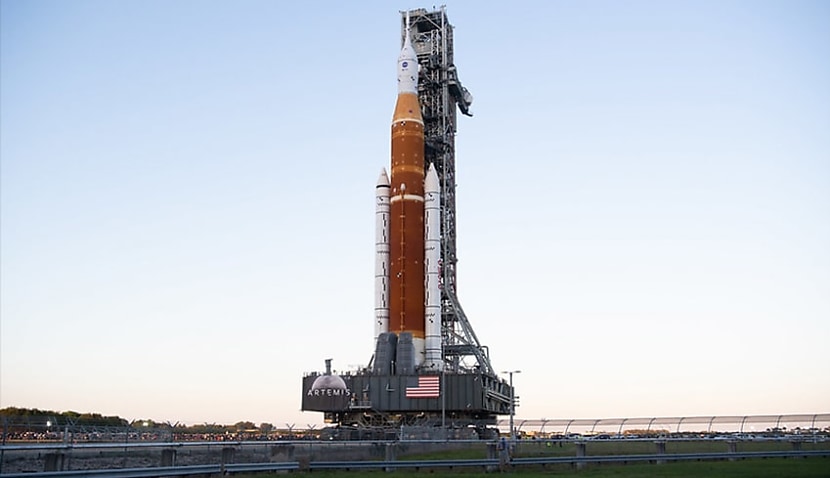
A joint statement released to coincide with a meeting between President Donald Trump and Japanese Prime Minister Shigeru Ishiba discussed both countries collaborating on “lunar surface exploration on future Artemis missions”.
The apparent vote of confidence in continuing with Artemis will come as a relief to the Australian Space Agency, which has been tasked with creating a rover to collect “soil” from the lunar surface.
The White House statement also significantly came after Boeing warned 400 employees working on its part of Artemis that they could be made redundant.
Taken together, the two developments now appear to suggest that the project is less likely to be cancelled and more likely to be adapted to give SpaceX, founded by Trump ally Elon Musk, a larger role.
Boeing is currently creating the main Space Launch System rocket, while SpaceX is using a modified version of Starship to act as a lunar lander.
However, Musk has long argued the plan is “extremely inefficient” given his company has made significant progress with testing Starship, which he believes can take humans directly to Mars without external help.
NASA has not formally announced any revisions to Artemis but recently delayed the second launch designed to fly astronauts close to the moon from September 2025 to April 2026.
The news means the subsequent Artemis III mission to return humans to the moon will also be pushed back until the middle of 2027.
Boeing also had the indignity of NASA announcing it would use SpaceX to return its astronauts stranded on the International Space Station, following problems with its separate Starliner launch vehicle.
SpaceX, meanwhile, is currently working on the eighth launch of Starship and hopes to conduct as many as 25 test missions each year.
Space Connect reported in December how ELO2 beat AROSE and picked to create Australia’s lunar rover.
The winning consortium, co-led by EPE and Lunar Outpost Oceania, said work would begin “immediately” on creating the final design while the Australian Space Agency finalises launch details.
The federal government granted ELO2 and AROSE $4 million last year to design an initial prototype for a rover – later named Roo-ver – that will be developed to explore the moon’s surface.
ELO2 was widely tipped to win after being the first to unveil its model late last year and subsequently creating four working versions, two of which were showcased at this year’s Australian Space Summit.
The winning design will collect lunar regolith, or moon soil, that will eventually be turned into oxygen to support a permanent NASA base.
Regolith can both become oxygen that humans can breathe or aid the production of rocket fuel necessary to support the launch of a rocket from the Moon to Mars and beyond.

Adam Thorn
Adam is a journalist who has worked for more than 40 prestigious media brands in the UK and Australia. Since 2005, his varied career has included stints as a reporter, copy editor, feature writer and editor for publications as diverse as Fleet Street newspaper The Sunday Times, fashion bible Jones, media and marketing website Mumbrella as well as lifestyle magazines such as GQ, Woman’s Weekly, Men’s Health and Loaded. He joined Momentum Media in early 2020 and currently writes for Australian Aviation and World of Aviation.
Receive the latest developments and updates on Australia’s space industry direct to your inbox. Subscribe today to Space Connect here.











